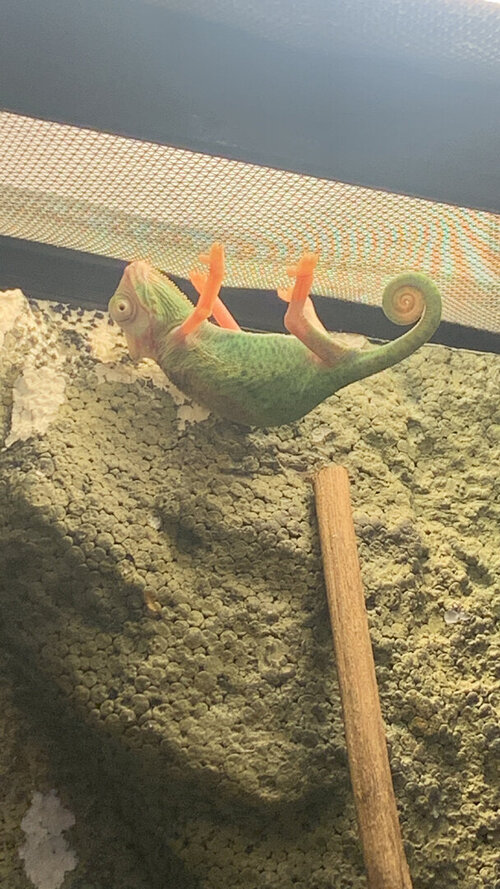Countrygirl01
New Member
I recently rescued a baby (~5g) piebald chameleon and I’m looking for some general information and experience with this particular morph. I really can’t find any information on the internet and want to provide the best care. Anything special that the piebalds need or y’all would recommend since we’re currently building her more permanent enclosure. She seems to be doing really well. Originally had a lot of retained shed in the eyes causing her to not eat on her own and keep her eyes closed. I’ve rehabilitated and assist fed for the last few weeks and her eyes are fully open now. She willingly eats when I assist, but not really eating well on her own when I leave crickets (in a bowl) in her enclosure. Any suggestions on how to encourage her to eat on her own/hunt?





